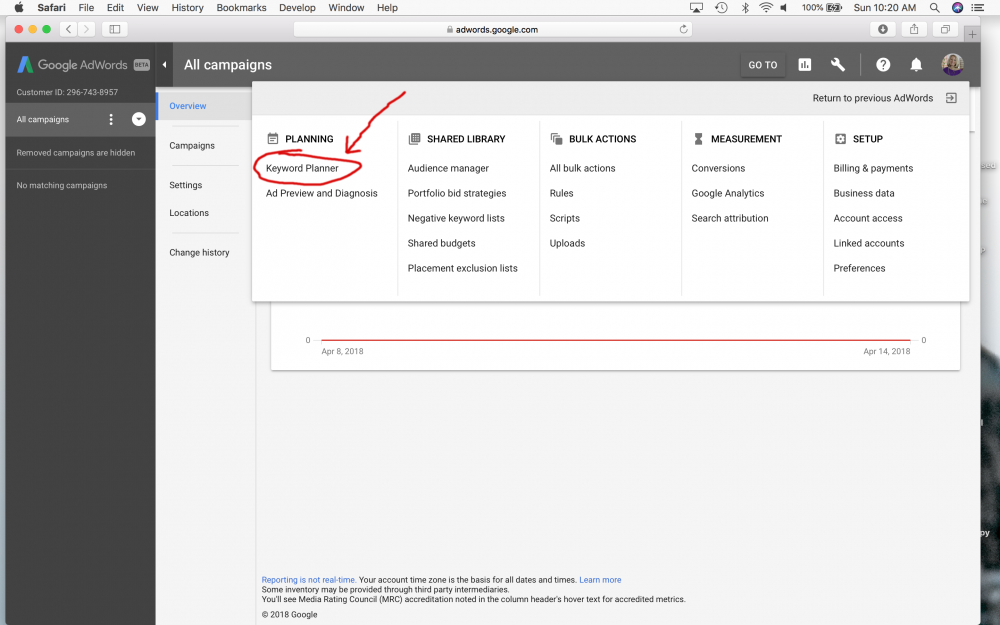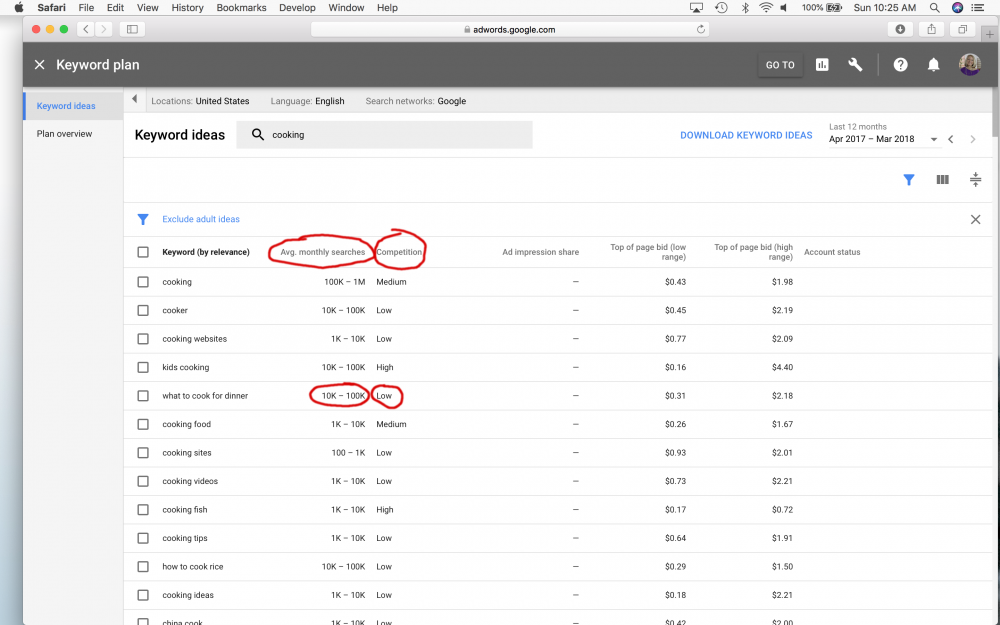As a copywriter and marketing expert, I’ve found SEO to be a really valuable tool. And that’s why I thought I’d put together this little step-by-step primer on SEO basics including using keyword research to grow your business .
But, first, let’s start with a little background on what SEO is and why it’s important.
SEO stands for “search engine optimization,” which is “the process of affecting the online visibility of a website or a web page in a web search engine’s unpaid results.”
The idea behind it is when your ideal clients are searching for your business on a search engine such as Google, Firefox, or Safari, you want your business to actually pop up in the search results.
The way that happens is to optimize your site for the search engines.
Now, there are some technical things you can do to help optimize your site (including paying attention to how fast your site loads and making sure it looks good on mobile devices), but really, the key is to make sure the search engines “know” your site is the best site for your ideal clients.
How do they know your site is precisely what your ideal clients are looking for?
Because you’re using the right keywords (which are the words and phrases your ideal clients are typing into the search engine to find you) on your site.
So, how do you know what those right keywords are?
That’s where this SEO basics primer comes in.
SEO Basics #1—Get clear on who your ideal clients are.
If you don’t know specifically who you’re trying to attract into your business, it’s going to be difficult to attract them. I have two articles here and here that can help.
SEO Basics 2—Get clear on the keywords your ideal clients are searching to find you.
For myself, this is a two-step process:
Step 1: Brainstorm all the words and phrases you think your ideal clients are using to find your products and services.
(It’s not necessary to spend a lot of time on this.)
Step 2: Use Google Keyword Planner for keyword research.
This is a free tool from Google, but you do have to sign up for an Adwords account (which is also free).
Once you do, look under the wrench icon:
Click on the wrench icon, then planner:
Now you can start your keyword research.
Here’s how it works:
Let’s say one of the keywords you brainstormed was “cooking.” You would enter “cooking” like so:
Once you hit enter, this is the screen you see:
See all the suggestions? This is a great resource to find the precise words and phrases your ideal clients would use to find your business.
So, what you want look at is high (or high-ish) monthly searches with LOW competition, because the higher the number, the higher the number of searches using those words..
Like the phrase, “what to cook for dinner.”
Other good ones are “cooking sites,” “cooking videos,” and “cooking tips.”
If there is high competition, that means there are a lot of sites using that phrase (not to mention a lot of businesses spending advertising money using that phrase). This makes it difficult to actually rank your site using that keyword or keyword phrase.
So, in this scenario, I would say “kids cooking” would not be a phrase to use as a keyword.
But, what if your business IS around helping kids cook? That’s when you would want to do more specific research around kids cooking, to see if there are other phrases that would work.
SEO Basics #3—Do your own searches using those keywords.
Open up your favorite search engine browser and do some searches using those keywords to see what comes up.
This will help you verify whether or not your ideal clients really are using those keywords. (If you end up on websites that don’t look like they would appeal to your ideal clients at all, that may be a sign you’re on the wrong track with your keywords.)
If your ideal clients are using those keywords, then you also want to get some idea what they’re seeing when they’re searching for you.
SEO Basics #4—Best practices for using your keyword research.
For myself, I use this SEO research in a variety of ways:
- To get a sense of which products, services, and programs my ideal clients (or my client’s ideal clients) are looking for and what language or words they’re using. The more we can create the products and programs and services our ideal clients want, and then market it to them using the words and phrases they’re using, the easier it will be to inspire them to buy.
- To create content (blog posts, videos, podcasts, etc.) to attract my ideal clients.
- To create marketing strategies that resonate with my ideal clients.
In a lot of ways, this type of research is really the backbone of any business.
And, if you’d like to dig more deeply into online marketing, including putting together an online marketing plan, my “Love-Based Online Marketing” book may be perfect for you.





 How to Succeed as a Writer
How to Succeed as a Writer A Little Secret About Sabotage (Compliments of Cutthroat Kitchen)
A Little Secret About Sabotage (Compliments of Cutthroat Kitchen) 4 Ways to Creatively Power Up Your Marketing
4 Ways to Creatively Power Up Your Marketing Quiz: Where Is Your Marketing Message Hanging Out?
Quiz: Where Is Your Marketing Message Hanging Out? 3 Keys to Making Money with Your Passion
3 Keys to Making Money with Your Passion
Leave a Reply